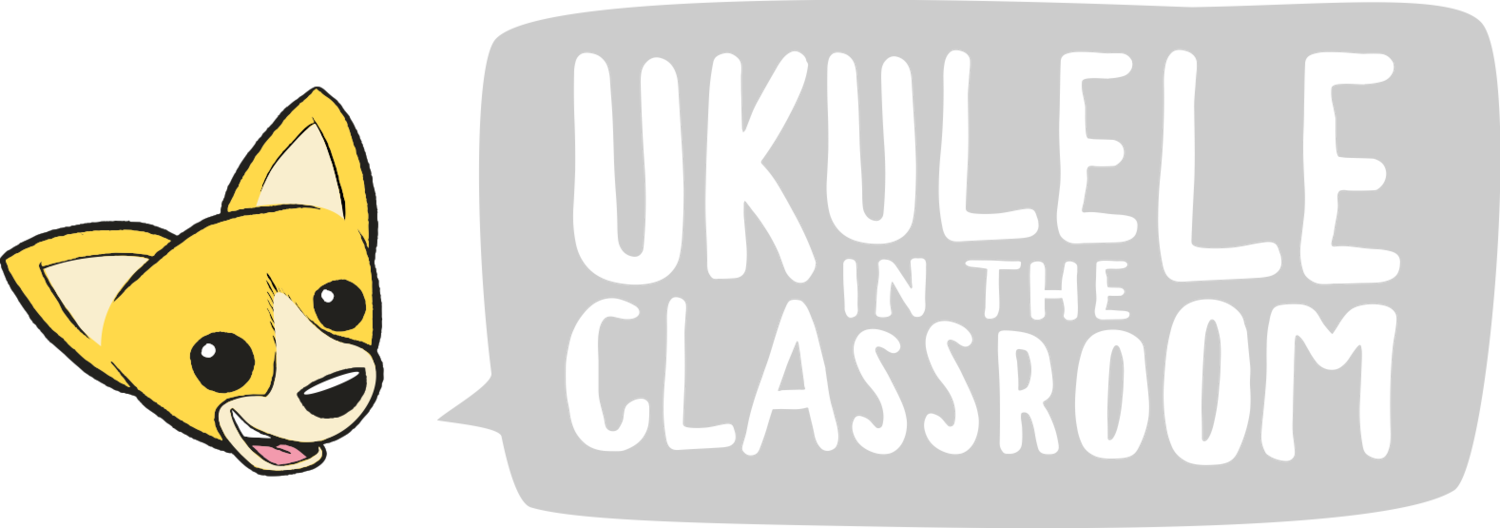Clawhammer Ukulele
By James Hill and Friends
Want to challenge yourself and your students with new techniques and repertoire? Look no further than clawhammer ukulele.
What the Heck is Clawhammer?
Clawhammer is an old and beautiful playing technique. It probably comes from West Africa and is used extensively in "old-time" banjo playing, a style that developed in 18th and 19th century America and is now closely associated with Appalachian music. It’s highly rhythmic technique that can work beautifully in both barn-burners and ballads. Best of all, it’s a natural fit for the ukulele.
As of this article’s publication, the Wikipedia entry on clawhammer includes only a fleeting mention of clawhammer ukulele. However, the technique has been in use by ukulele performers including Cathy Fink, Li’l Rev, Jere Canote, Aaron Keim and yours truly for years.
In this article you’ll find a number of different approaches to clawhammer performance and instruction. Note: for clawhammer to work best, you should have a high 4th string on your ukulele.
Love That Clawhammer Sound!
As with any technique (in my opinion), the first step is to fall in love with the end product. What are you aiming for? Do you love the sound that you’re ultimately trying to make? If so, you’ll find the motivation to learn. To this end, listen to clawhammer recordings (ukulele, banjo, guitar, whatever). Fall in love with that clawhammer sound. Start with these videos:
Jere Canote: Turtle's Dream
Cathy Fink and Marcy Marxer: Snowdrop
Aaron Keim: Cripple Creek
Li'l Rev: Crawhammer Medley
One Ryhthm to Rule Them All
The essence of clawhammer technique is a simple: long, short, short. Yep, that’s it. Called the "bum diddy" or "tock ticka" rhythm, this simple rhythmic cell is the glue that holds the clawhammer universe together.
Don’t be fooled by this apparent simplicity. It’s easy for the brain to understand but notoriously hard for the fingers to grasp. The first time you try clawhammer it may feel unnatural. You might think: "how is this supposed to work?" or "what a crazy way to play!" Be patient with yourself and stick with it. You won’t regret it.
Play "bum diddy" slow and steady until your spouse or neighbour starts to complain.
The best way to learn is by doing. Play "bum diddy" slow and steady until your spouse or neighbour starts to complain. The best clawhammer class I ever took was taught by the amazing Steve Baughman. It was 60 minutes of slow, non-stop bum diddy. There were about 20 people in the class, mostly banjos and guitars. It was hypnotizing. And it worked.
Just sit there and bum diddy. Bum diddy until you go into a trance. Bum diddy until it feels natural. Then bum diddy some more.
The Nuts and Bolts of Clawhammer
Steve Baughman described the motion and position of the clawhammering right hand as being similar to knocking (gently) on a door. The wrist bends but the fingers pretty much stay in place relative to each other. I have yet to find a better way to describe it.
Try this: use the nail of your index or middle finger to hit the first string with a downward stroke. Do that twice, then pluck the fourth string with your thumb. Make sure you keep to the long-short-short (bum diddy) rhythm. Try the example below:
With very few exceptions, strings are hit or plucked in a downward motion in clawhammer, unlike other finger styles which often use the fingers to pluck in an upward motion (think classical guitar, for example).
Here are two excellent instructional videos that can help you and/or your students to master the essentials of clawhammer technique. One is by Aaron Keim and the other by Li'l Rev. These guys have been clawhammering the uke for years.
Aaron Keim lesson
Li'l Rev lesson
Aaron Keim lesson
Li'l Rev lesson
Keep in Mind
Things to keep in mind when learning clawhammer:
Let the thumb rest on the fourth string when it’s not plucking. This can feel strange at first but it’s crucial if you’re going to develop a smooth, rhythmic clawhammer.
Experiment with the contact point. In other words, find the "sweet spot" on the string where clawhammer sounds and feels best. Some clawhammer players play over the fretboard, others play over the sound hole. It depends on the sound you want and the size of ukulele you play.
Relax. Be mindful of tension in your hand and fingers. If you feel tension creeping into your hand, just let it go.
Wrapping Up
James Hill and Anne Davison: Assam / Like a Bird
One of the great benefits of clawhammer ukulele is that it’s a tried-and-true plateau buster. In other words, if you’ve been playing the ukulele for a while and you’re starting to get tired of the "same old, same old" but don’t know where to turn, this could be just the thing to kick-start your strumming. It worked for me and it has worked for many friends and students of mine. Besides, it’s a beautiful sound with a rich history and fun repertoire. You really have nothing to loose by giving it a try.
Bum diddy!
James Hill and Anne Davison: Assam / Like a Bird
James Hill is editor of Ukulele Yes! and co-author of Ukulele in the Classroom. His online video-lesson program, The Ukulele Way, is used by thousands of students around the world. Visit www.jameshillmusic.com for more.




This month, Cynthia Kinnunen gives us some intervalactic tactics
Building recognition of intervals aurally (by ear) and on the page (by sight) helps to improve many aspects of our musical learning, including sight reading, sight singing, harmonizing and more! But knowing where to begin teaching intervals can leave us feeling like we’re on another planet.